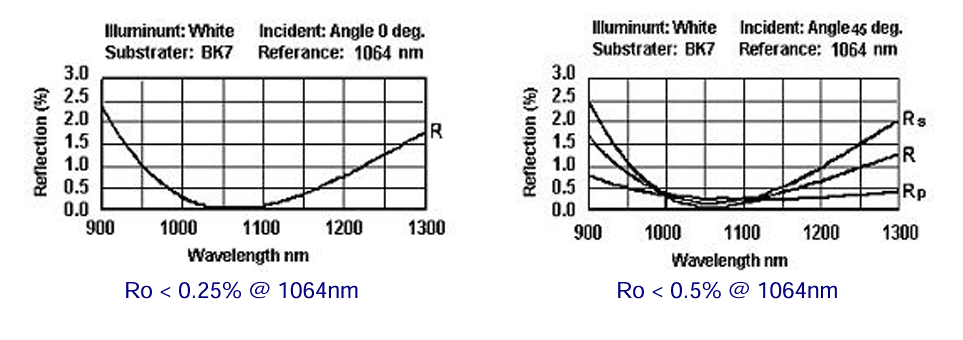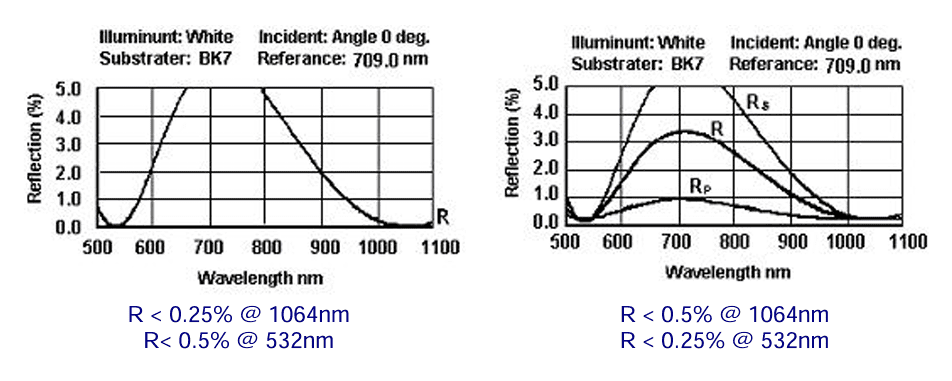An anti-reflection coating is a thin film applied to optical surfaces, such as lenses and glass, to minimize reflections and enhance light transmission. By reducing the amount of light that bounces off the surface, these coatings improve visibility and optical performance in devices like glasses, cameras, and microscopes.
Single Layer MgF2 Antireflection Coating:
Magnesium fluoride (MgF2) is the most commonly used material for thin film optical coatings. While its performance may not be exceptional, it provides a considerable improvement over uncoated surfaces. Due to its broad transmission range, MgF2 is an excellent choice for coatings in the ultraviolet (UV) wavelength range.

Multilayer Antireflective Coating:
Multilayer antireflective coatings can achieve extremely low reflectivity at the center wavelength. They are commonly used for single laser wavelengths or multiple closely spaced wavelength systems to ensure minimal loss at the center wavelength.
Notch Optics offers coatings with center wavelengths ranging from 250 nm to 2200 nm. When choosing an appropriate multilayer antireflection coating, it is essential to consider both the center wavelength and the damage threshold.

Multilayer Broadband Antireflection Coating:
Unlike the single-layer MgF2 broadband antireflection coating, multilayer coatings can achieve higher transmission across a broader range of wavelengths. This makes them ideal for various applications involving multi-wavelength lasers and white light sources. It’s important to note that both the wavelength range and reflectivity of the coating can vary with the angle of incidence.

Dual Wavelength Band Antireflective Coating:
This coating enables high transmission for two specific center wavelengths as they pass through the substrate. It is commonly utilized in frequency doubling systems and other multi-laser output applications, such as the Nd:YVO4 laser (1064 nm) and its second harmonic generation (532 nm) green laser.

